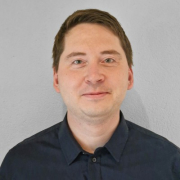

Splunk Enterprise Security and Check Point Security Management are key players in the security intelligence and management category. Splunk is noted for its robust data analysis and integration capabilities, making it ideal for environments requiring high data visibility and rapid threat detection. Check Point excels in centralized management, particularly in policy deployment and firewall rule integration, appealing to those needing streamlined security operations.
Features: Splunk offers scalability, integration with diverse data sources, and real-time threat detection through customizable dashboards and powerful analytics. These features are beneficial for organizations handling complex data. Check Point provides centralized management, effective policy deployment, intrusion prevention, and URL filtering, creating a cohesive security ecosystem.
Room for Improvement: Splunk faces challenges in operational complexity, documentation, and licensing, with users seeking improved integration, usability, and support. Check Point can enhance its GUI performance, streamline integration processes, and improve multi-cloud compatibility and licensing options.
Ease of Deployment and Customer Service: Splunk offers cloud and on-premises deployment models but struggles with scaling and inconsistent support response times. Its community and documentation are appreciated, yet official support efficiency varies. Check Point focuses on robust centralized management but finds deployment challenging and needs better support responsiveness.
Pricing and ROI: Both solutions are considered expensive. Splunk's data ingestion-based pricing can lead to high costs, although its extensive features often justify the expense. Check Point provides competitive pricing and valuable security offerings that deliver significant ROI, especially in unified management environments.
I have seen a strong ROI from using Check Point Security Management through unified policy management, reduced misconfigurations, and faster incident response.
The time to resolve issues is very much better now with Check Point Security Management.
I have seen a hundred percent return on investment with Check Point Security Management.
The documentation for Splunk Enterprise Security is outstanding. It is well-organized and easy to access.
We couldn't calculate what would have been the cost if they had actually gotten compromised; however, they were in the process, so every investment was returned immediately.
On average, my SecOps team takes probably at least a quarter of the time, if not more, to remediate security incidents with Splunk Enterprise Security compared to our previous solution.
When we face technical issues, they are ready to help us.
We have partner support that helps us mitigate vulnerabilities reported by our infrastructure team.
The challenge was with drivers due to the size, and we had not provisioned the partition to the right size.
We have paid for Splunk support, and we’re not on the free tier hoping for assistance; we are a significant customer and invest a lot in this service.
I have had nothing but good experiences with Splunk support, receiving timely and helpful replies.
We've had great customer success managers who have helped us navigate scaling from 600 gigs to 30 terabytes.
It can be a multi-domain Security Management server and can manage large or segmented environments with multiple domains or customers.
When you upgrade multiple times, you leave many files that are useless. They are dated, so it's always better to create a new machine every few versions, for example, three or four major versions.
The scalability of Check Point Security Management is excellent.
We currently rely on disaster recovery and backup recovery, which takes time to recover, during which you're basically blind, so I'm pushing my leadership team to switch over to a clustering environment for constant availability.
They struggle a bit with pure virtual environments, but in terms of how much they can handle, it is pretty good.
It is easy to scale.
Check Point Security Management is really stable, and I have not experienced any downtime or issues with reliability except for when we do upgrades.
The SmartConsole used to administrate the security management is somewhat unstable.
Check Point Security Management is stable and I have not experienced any downtime or reliability issues.
They test it very thoroughly before release, and our customers have Splunk running for months without issues.
Splunk has been very reliable and very consistent.
It provides a stable environment but needs to integrate with ITSM platforms to achieve better visibility.
When the logs are too heavy for the security management server, the CPU spike will be high, causing our management day-to-day activity to lag or become difficult.
I believe they can improve the management by allowing better API functionality because the API now is a little complicated, making it difficult to do automation.
Additionally, it crashes pretty regularly, so they could resolve the stability issues as well.
Improving the infrastructure behind Splunk Enterprise Security is vital—enhanced cores, CPUs, and memory should be prioritized to support better processing power.
Splunk Enterprise Security is not something that automatically picks things; you have to set up use cases, update data models, and link the right use cases to the right data models for those detections to happen.
For any future enhancements or features, such as MLTK and SOAR platform integration, we need more visibility, training, and certification for the skilled professionals who are working.
Since we are using it extensively, we get significant discounts during procurement.
Licensing is quite expensive.
We pay on a three-year base.
I saw clients spend two million dollars a year just feeding data into the Splunk solution.
The platform requires significant financial investment and resources, making it expensive despite its comprehensive features.
I find it to be affordable, which is why every industry uses it.
Check Point Security Management has positively impacted my organization by providing centralized control, allowing us to manage all security policies and gateways from a single console, reducing complexity and saving time.
After deploying Check Point Security Management, we improved our productivity by integrating all devices into a single console instead of managing separate log-ins for each branch's gateways, making our admin team's tasks easier.
The monitoring is exceptional as it provides consolidated logs, signals, and any alerts that come from the security gateway in real time.
This capability is useful for performance monitoring and issue identification.
I assess Splunk Enterprise Security's insider threat detection capabilities for helping to find unknown threats and anomalous user behavior as great.
Splunk Enterprise Security provides the foundation for unified threat detection, investigation, and response, enabling fast identification of critical issues.
| Product | Market Share (%) |
|---|---|
| Splunk Enterprise Security | 7.7% |
| Check Point Security Management | 0.5% |
| Other | 91.8% |


| Company Size | Count |
|---|---|
| Small Business | 44 |
| Midsize Enterprise | 30 |
| Large Enterprise | 41 |
| Company Size | Count |
|---|---|
| Small Business | 110 |
| Midsize Enterprise | 50 |
| Large Enterprise | 257 |
Check Point Security Management is an advanced security management platform for enterprises. The platform integrates all aspects of security. A single platform manages the entire infrastructure, from data centers to private/public cloud deployments.
Check Point Security Management is a reliable and easy-to-use security platform. It integrates all aspects of your security environment to strengthen the security posture without impairing productivity. The system has a layered policy model. This means the security policy can be separated into layers for network segmentation. Different administrators can manage different policies. The policy layer automates the tasks.
The platform is extensible, scalable, and integrates easily with orchestration systems and change management.
Basic Components of the Infrastructure
The smart console offers several advantages. Changes in security policies and logs can be done with a click. You can navigate from an item within a log to the policy. There are also built-in multi-language support and accessibility features.
1. Security Management Server: The server manages security gateways with set security policies and monitors security events on the network.
The automation server is an integrated part of the management server. The API server is active by default on servers with 4 GB of RAM or more and on standalone servers with 8 or more GB of RAM.
The automation server communicates with the management server the same way as the Smart Console. This architecture allows the same validation errors and warnings to be presented when using an automation session.
The same audit logs generated using the Smart Console are also generated using an automation session. If you have a multi-domain environment, there is only one automation server that monitors all the IP addresses of the multi-domain management server.
2. Security Gateway is placed at the edge of the network. It monitors and filters traffic and enforces security policies.
Logging, Event management, and Monitoring
With Check Point Security Management, logging, reporting, event management, and monitoring are integrated. The platform features widgets and chart templates that optimize visibility. One of the best features is the one-click exploration. This simplifies going from a general overview to specific event details.
Benefits of Check Point Security Management
The unified console also means a single policy for users, data, applications, and networks. The granularity control helps accelerate administration processes. This feature, together with automation, is key to achieving reduced operational overhead. Security teams can automate tasks and even create self-service security web portals with the Check Point Security Management platform.
Threat management is fully integrated, with reporting, logging, and monitoring all in one dashboard. This provides full visibility into the security of the network.
Security Management Suite
The Security Management Suite consists of the following modules:
Reviews from Real Users
A Network Security Engineer/Architect at a tech services company says, "The features we like and find the most valuable are the ways we can manage the policy, create objects, and drag and drop objects in our daily operation. It makes our daily operation on the firewall management much easier than going, for example, to one firewall, then going to the other."
"The management API is the best new feature for me. It allows us to further automate our customers' automated server ordering," says a System Engineer Network & Security at OTTO GmbH & Co KG.
A Senior Infrastructure Services Specialist at St.George Bank Limited adds that "The solution is ideal for use and deployment in a large infrastructure environment."
Splunk Enterprise Security delivers powerful log management, rapid searches, and intuitive dashboards, enhancing real-time analytics and security measures. Its advanced machine learning and wide system compatibility streamline threat detection and incident response across diverse IT environments.
Splunk Enterprise Security stands out in security operations with robust features like comprehensive threat intelligence and seamless data integration. Its real-time analytics and customizable queries enable proactive threat analysis and efficient incident response. Integration with multiple third-party feeds allows detailed threat correlation and streamlined data visualization. Users find the intuitive UI and broad compatibility support efficient threat detection while reducing false positives. Despite its strengths, areas such as visualization capabilities and integration processes with cloud environments need enhancement. Users face a high learning curve, and improvements in automation, AI, documentation, and training are desired to maximize its potential.
What Are the Key Features of Splunk Enterprise Security?In specific industries like finance and healthcare, Splunk Enterprise Security is instrumental for log aggregation, SIEM functionalities, and compliance monitoring. Companies leverage its capabilities for proactive threat analysis and response, ensuring comprehensive security monitoring and integration with various tools for heightened operational intelligence.
We monitor all Log Management reviews to prevent fraudulent reviews and keep review quality high. We do not post reviews by company employees or direct competitors. We validate each review for authenticity via cross-reference with LinkedIn, and personal follow-up with the reviewer when necessary.